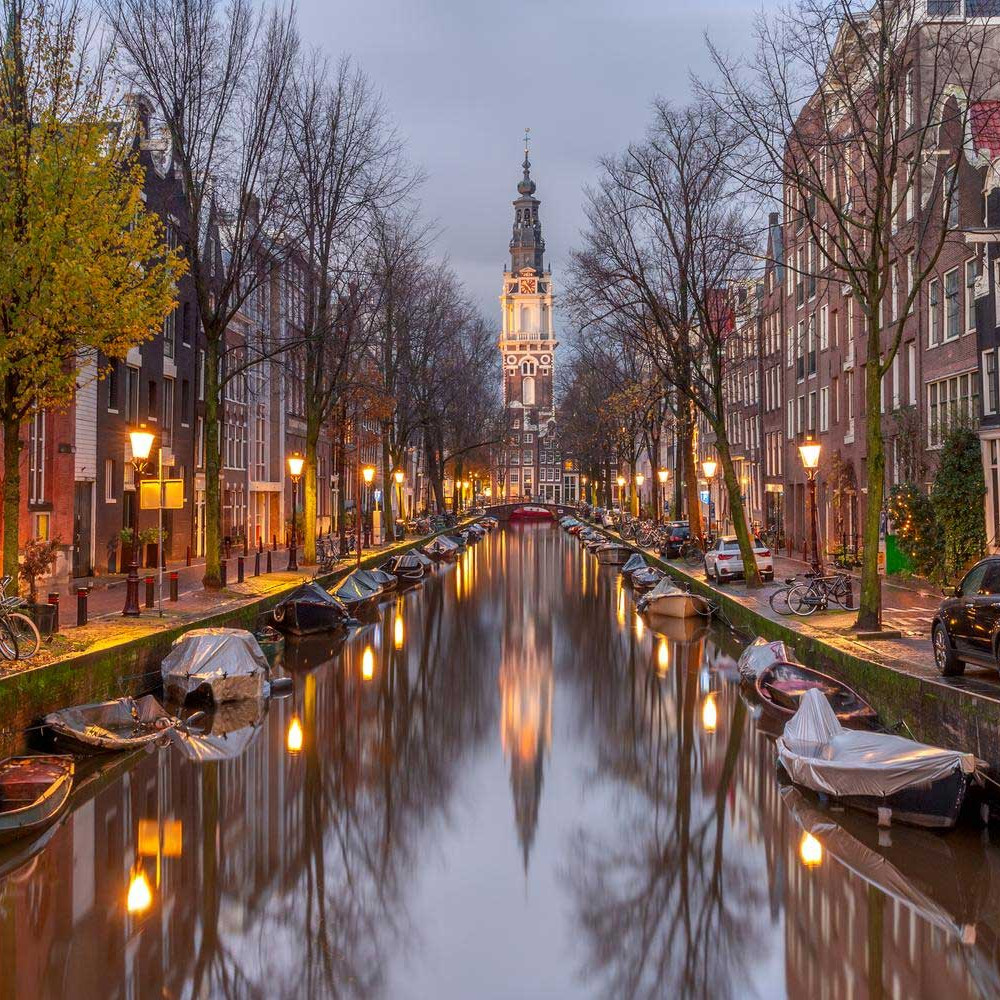A Biker's Guide to Amsterdam's Streets and Canals
Have you ever imagined a city where bicycles dance through streets like leaves in the wind, outnumbering cars and becoming the heartbeat of daily life? Amsterdam‘s transformation into a cycling paradise is a testament to how thoughtful urban planning and community spirit can revolutionize city transportation.
Amsterdam’s dedicated lanes, bike-specific signals, and ample parking make cycling more than transport—it’s a way to connect historic canals, neighborhoods, and the countryside. Discover how this unique culture and infrastructure can transform your experience exploring the city on two wheels.
Amsterdam's Transformation into a Cycling Capital
Amsterdam and Copenhagen are globally recognized as the cycling capitals, earned through decades of deliberate urban design, cultural shifts, and infrastructure investment. The city’s transformation began in the 1970s as a response to rising car accidents and pollution, turning cycling into the primary mode of transport for residents.
“In July 1965, the Provo’s – an anarchistic political organization involved with social and environmental issues and with strong views against mass motorization – released the “White Bicycle Plan” in Amsterdam.” — Beeldbank Amsterdam; Shaheen et al. (2012)
Amsterdam is a shining example of how urban planning and community commitment can reshape transportation. Years of thoughtful urban development and infrastructure improvements have paid off handsomely. This milestone reflects the city’s successful shift toward sustainable mobility.
Here’s what makes Amsterdam’s cycling infrastructure stand out:
- Dedicated bike lanes separated from car traffic
- Bike-specific traffic signals at intersections
- Abundant bike parking facilities
- Clear signage and road markings
- Well-maintained cycling surfaces
The cycling culture in Amsterdam embraces both function and style. Many riders enhance their experience with pro-style custom cycling jersey options that boost visibility and comfort while exploring the city’s extensive network of paths.
The combination of practical infrastructure and personal expression has created a thriving community of cyclists who’ve made two-wheeled transport an integral part of Amsterdam’s lifestyle.

Cycling Culture: Attitudes, Safety, and Everyday Life
Amsterdam’s cycling culture is more than a means of transportation—it’s a way of life that shapes the city’s pace and social dynamics. With more bikes than residents, the city has developed a cyclist-first infrastructure. Dedicated lanes are often separated from car traffic, creating a safe and efficient network.
However, this also means:
- Cycling is fast-paced
- Constant attention is essential
- Understanding local norms is key
For solo female travelers, adapting to local behaviors—such as hand signaling and maintaining steady speeds—helps you blend in and ride confidently.
Local Etiquette and Safety Tips
Understanding and respecting cycling etiquette is key to navigating Amsterdam’s busy bike paths, especially where space is shared with trams and pedestrians.
Essential cycling practices:
- Stick to the bike lane: Always ride in the designated cycling paths, typically on the right side and clearly marked.
- Obey traffic rules: Stop at red lights, follow all road signs, and never ride on sidewalks, pedestrian zones, or highways.
- Use lights after dark: Dutch law requires working front and rear lights when riding at night.
- Signal clearly: Before turning, extend your arm in the direction you intend to go.
- Handle tram tracks carefully: Cross tram rails diagonally to avoid your tires slipping into the grooves.
- Park properly: Only leave your bike in marked parking areas or racks; improperly parked bikes may be removed. Always lock it securely to prevent theft.
- Be considerate: Ride in pairs at most, match the traffic flow, and stop off to the side if you need to check your phone or map.
- Skip peak hours: If possible, avoid riding between 8–9 AM and 5–6 PM, when crowded paths and junction delays are frequent.
- Don’t mimic locals’ bad habits: Even if some residents ignore traffic signals or ride without bike lights, always follow the rules for your safety and to avoid fines.
Even though helmets aren’t required, keeping a lock and a compact repair kit on hand in case of unexpected issues while riding is recommended.
Blending Travel and Local Life
Cycling in Amsterdam weaves you into the city’s daily routine. Locals often pause during rides—at flower stalls, markets, or canal-side cafés—which adds a cultural layer to transportation.
Leisure meets utility as:
- Biking leads to unique local spots
- You experience authentic city life
- You maintain independence and flexibility
This immersive exploration style allows solo travelers to enjoy Amsterdam’s rhythm at their own pace.
| Accessible Amsterdam Cycling: Amsterdam’s flat terrain and consistent road maintenance make biking accessible to riders of all ages and skill levels. |
Canal-Side Adventures and Historical Routes
Amsterdam offers several historical cycling routes that combine cultural discovery with scenic riding. These routes are perfect for solo female travelers looking to immerse themselves in the city’s rich past while enjoying safe bike paths.
These routes lead through iconic neighborhoods, past centuries-old landmarks, and alongside the famous canals that earned Amsterdam its UNESCO World Heritage status.
Here are the top historical cycling routes in Amsterdam:

Amsterdam Canal Ring
Built in the 17th century during the Dutch Golden Age, this route circles the city’s historic heart.
- Follows concentric canals: Herengracht, Keizersgracht, Prinsengracht
- Views of merchant houses and hidden courtyards
- Passes Anne Frank House & National Maritime Museum
- Offers reflection and education
Jordaan Neighborhood Circuit
A vibrant, artsy path through one of Amsterdam’s most character-rich neighborhoods.
- Former working-class area turned creative hub
- Lined with galleries, shops, and pubs
- Reveals Amsterdam’s transformation through time
- Less touristy, more authentic
Amstel River Route
Ideal for cyclists ready to ride beyond the city center.
- Follows the Amstel River
- Connects mills, villages, and parks
- Offers rural Dutch scenery and stories
- Great escape from urban buzz
Why These Routes Are Ideal for Solo Travelers
Each path is thoughtfully designed to offer a safe, enriching, and flexible experience.
- Clearly marked paths with accessible maps
- Plenty of bike parking and cozy cafés
- Blend of history, culture, and scenic cycling
- Designed for comfort, flexibility, and safety
Exploring historic routes by bike offers a deeper connection to Amsterdam’s evolution, combining freedom with discovery—all at your own pace.

Getting Started: Rentals, Bikes, and Guided Tours
Amsterdam’s streets buzz with the gentle whir of Stadsfietsen, traditional city bikes that perfectly match the city’s character. These sturdy two-wheelers easily handle everything from cobblestone paths to smooth cycling lanes, making them the go-to choice for exploring the Dutch capital.
Their upright riding position lets you take in the stunning canal views while maintaining comfort during your journey.
Before you hop on a bike, consider these essential rental options and tour possibilities that’ll help you discover Amsterdam’s charm:
- Local bike shops offering hourly, daily, or weekly rentals
- Guided group tours covering major landmarks and hidden gems
- Self-guided route maps highlighting scenic paths
- Multi-day bike rentals with safety equipment included
- Special bikes are available for families and children
Whether you’re a first-time visitor or an experienced cyclist, the city’s comprehensive bike network welcomes everyone. Local rental shops don’t just provide bikes—they’ll also share valuable tips about traffic rules and popular routes.
Many spots offer GPS devices or smartphone mounts, which can help you stay on track while exploring Amsterdam’s picturesque streets and tranquil outskirts.
| Amsterdam Cycling Companion: Cycling apps designed for Amsterdam can provide real-time updates on bike lane conditions, traffic jams, and shortcuts for a stress-free ride. |
Cycling Revolution Legacy
Amsterdam’s transformation into a cycling paradise demonstrates how thoughtful urban planning and community commitment can revolutionize a city’s transportation culture.
The seamless integration of cycling infrastructure with historical canals, modern amenities, and daily life showcases a sustainable model that cities worldwide aspire to replicate.
The Dutch capital’s success story is an inspiring testament to how prioritizing two-wheeled transport can create a more sustainable city and a more vibrant, connected, and livable urban environment that enriches the lives of residents and visitors alike.

